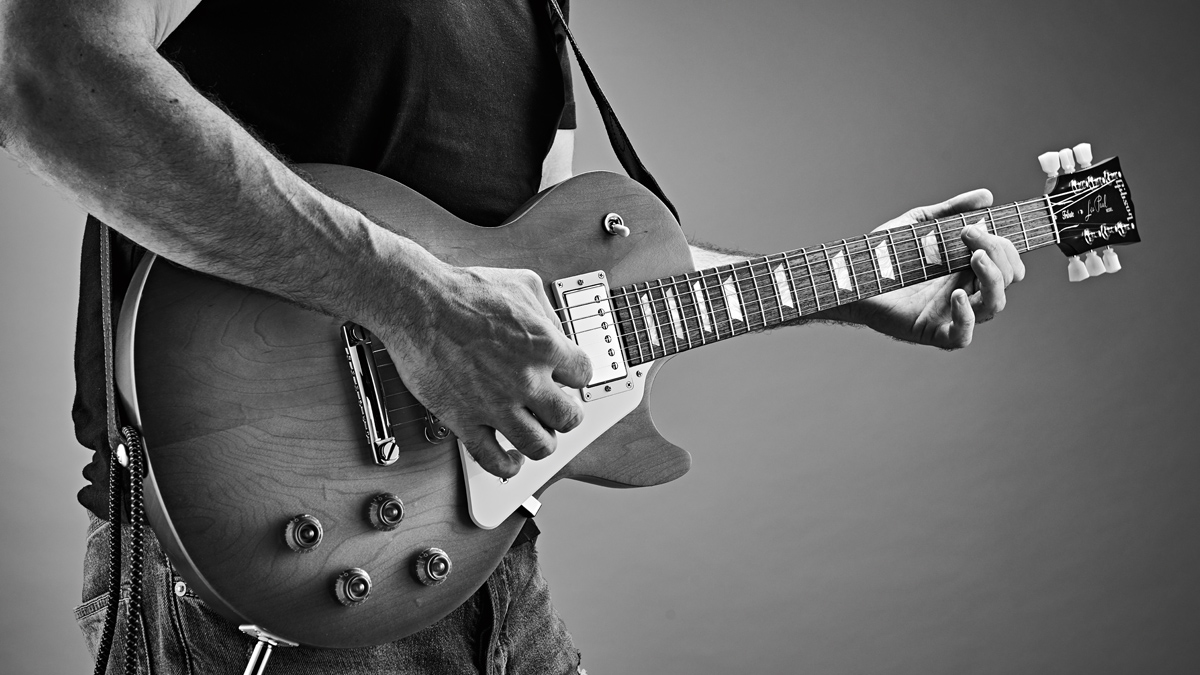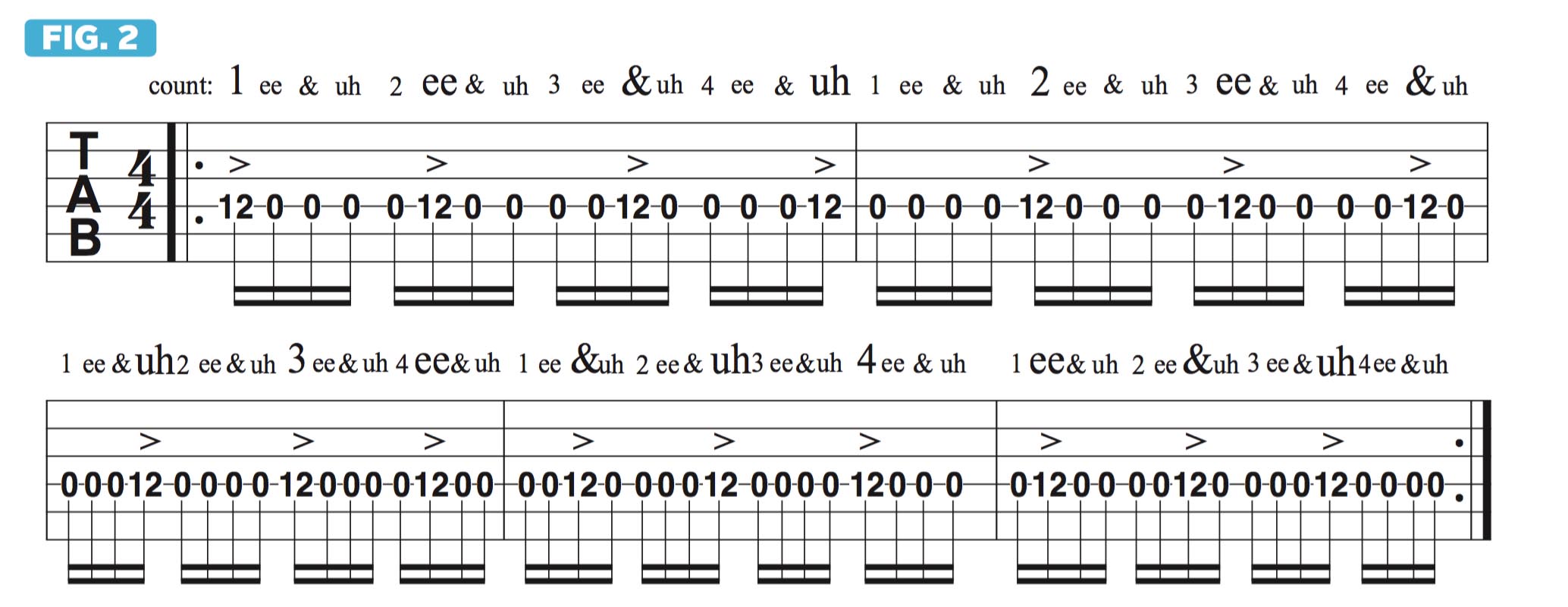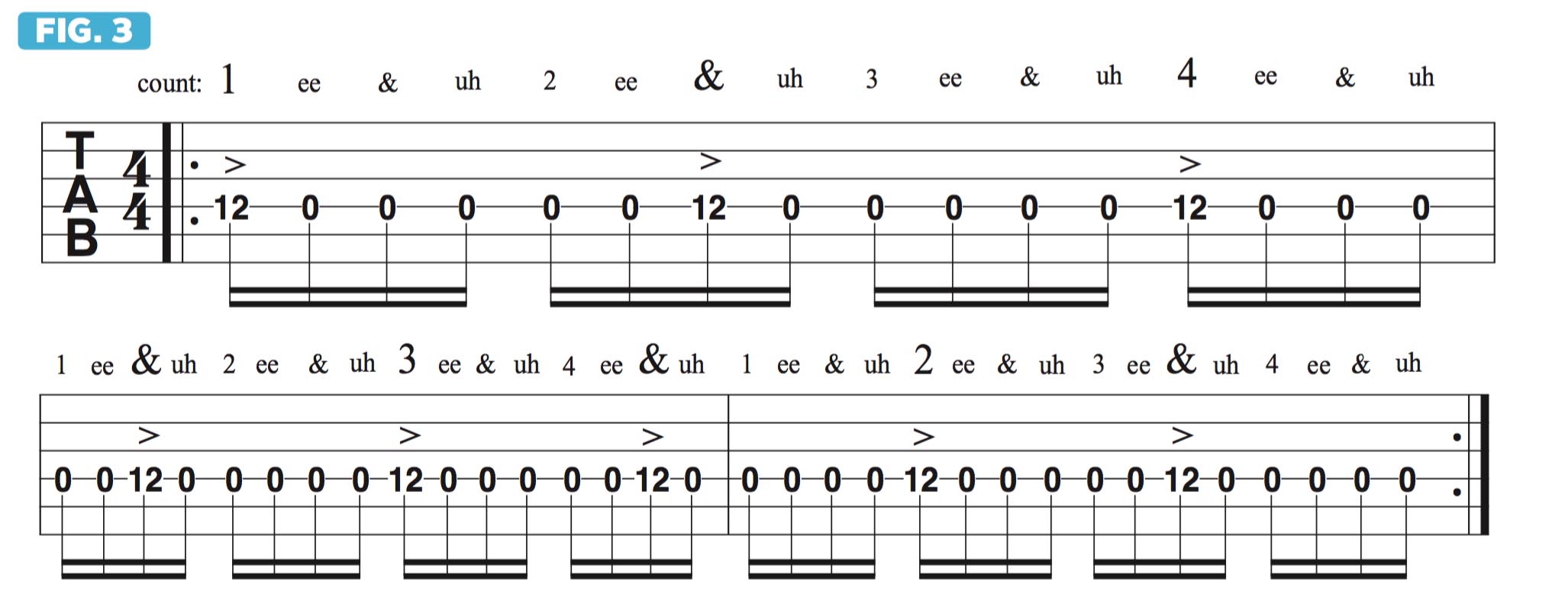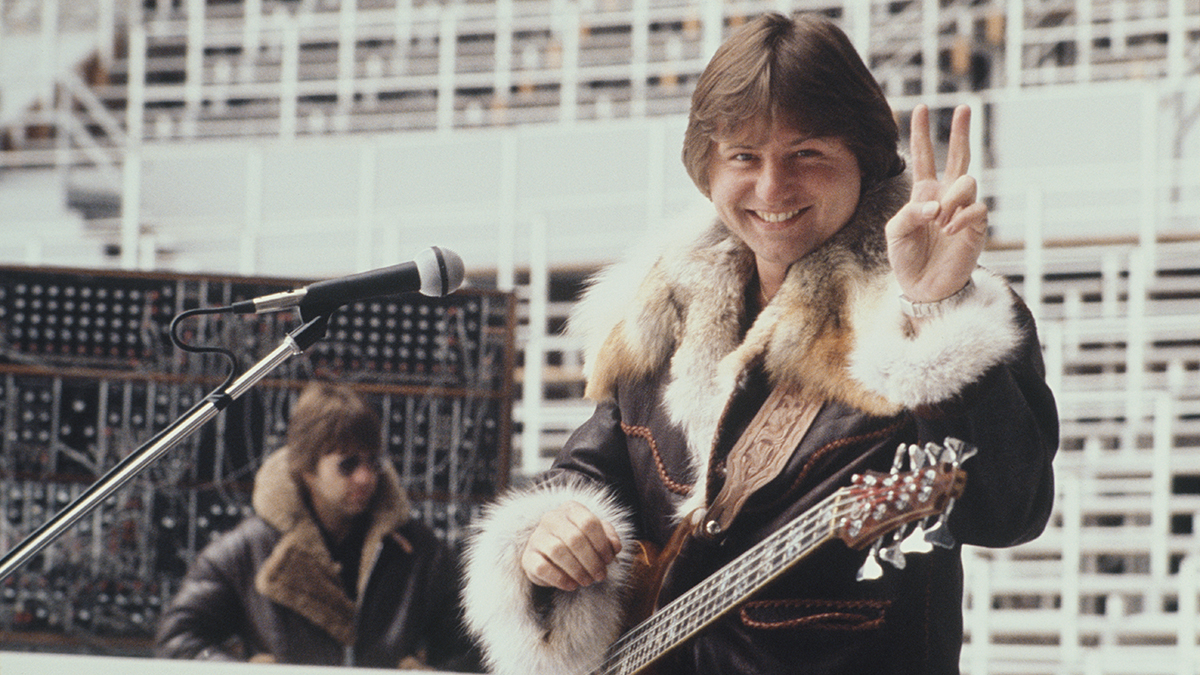Shake up your rhythm playing with shifting 16th-note accents
This “rhythm-within-a-rhythm” approach can add dynamism to your playing

Previously, we learned how to count 16th notes and 16th rests in 4/4 meter. We also saw how the four 16th notes that reside within each beat can be notationally linked with two horizontal beams connecting their vertical stems, forming what some refer to as a “quad,” which I find is a helpful term, visually and conceptually.
And, as you recall, a single 16th note, when surrounded by rests, may be indicated by a double flag attached to its stem. In this and the next couple of lessons, I’ll demonstrate a variety of cool ways to create 16th-note syncopations, using approaches similar to what we did with eighth notes.
We’ll start by looking at shifting accent patterns that can be applied to a continuous stream of 16th notes, using what I call the “rhythm-within-a-rhythm” approach.
As you recall from our study of eighth-note syncopations, in I Got Rhythm, Parts 5-7, I offered examples of riffs that are built around a dotted-quarter accent “chain” in 44 meter, which can be used to create a cyclical pattern that takes three bars to come full circle and resolve back to beat 1.
That exercise is a great learning tool, as it covers every permutation of where an eighth-note accent can fall. I’d now like to show you how to similarly apply shifting accents to 16th notes.
The only difference is now we’re in a smaller rhythmic “gear” and are working with subdivisions that are twice as fast as eighth notes and half their duration.
As a primer exercise, we’ll begin by playing an unbroken stream of 16th notes entirely on the D string, with a different accent scheme in each bar, created by hitting the 12th-fret octave D note once per beat, with the other three 16ths being the open D note picked repeatedly (see Figure 1).
All the latest guitar news, interviews, lessons, reviews, deals and more, direct to your inbox!
Notice that, in each bar, we’re shifting and metrically displacing the high, fretted D note ahead, or forward, one 16th note and that, due to the way it “pops” above the lower ones, it’s inherently accented, even if we pick everything at the same dynamic level.
(This is a good example of how melodic contour can shape a line rhythmically.) In the next exercise, we’re going to shift our accented high D note forward by a 16th note on every beat (see Figure 2).
As you can hear, this creates a rather dizzying, tricky-sounding chain of five-note groups that, interestingly, takes five bars to resolve, with our starting note, the high D, finally landing on beat 1 again. (In 5/4, it only takes one bar to do this.) This “fives on fours” effect is an example of a slick, sophisticated rhythmic device called hemiola, which drummers love.
Hemiola, which is the basis for polyrhythms, may be defined as a recurring accent pattern that groups notes in such a way that “goes against the grain” of their rhythmic subdivision and suggests a different one played at a different tempo.
In this case, we’re implying what sounds like quintuplets played at a slightly slower tempo. (We’ll explore quintuplets in a future lesson.) If we instead stagger the fretted high D notes an additional 16th note apart, forming six-note groups, we would then be implying “phony sextuplets” (see Figure 3).
We would also be forming, within our stream of 16th notes, a three-bar chain of dotted-quarter syncopations, which is something we’re now well acquainted with, from the previously mentioned lessons on eighth notes.
Another cool thing to do is apply this pattern to melodic runs based on pentatonic scales or modes, as great alternate pickers like Eric Johnson, Zakk Wylde, Steve Morse, John Petrucci and Joe Bonamassa do.
Over the past 30 years, Jimmy Brown has built a reputation as one of the world's finest music educators, through his work as a transcriber and Senior Music Editor for Guitar World magazine and Lessons Editor for its sister publication, Guitar Player. In addition to these roles, Jimmy is also a busy working musician, performing regularly in the greater New York City area. Jimmy earned a Bachelor of Music degree in Jazz Studies and Performance and Music Management from William Paterson University in 1989. He is also an experienced private guitar teacher and an accomplished writer.




